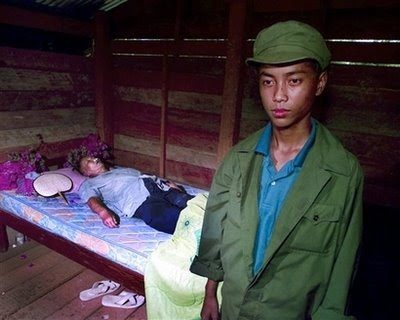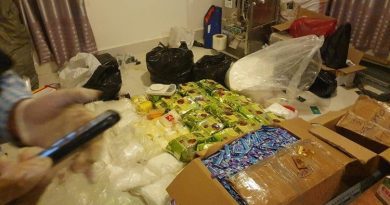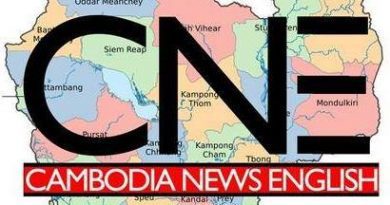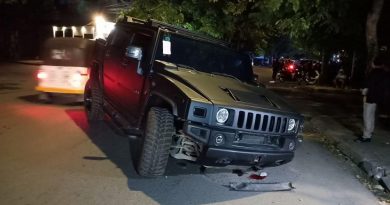This Week In Cambodian History: April 9-15
On April 9, 1970, the Prasaut (in Svay Rieng Province) massacre occurred. Hundreds of civilian Vietnamese including women and children were regrouped in an open space, near an army post. The army opened fire on them, using artillery. An early estimate by the French Embassy suggests that eighty-five civilian Vietnamese were killed, but did not account for wounded. The government alleged it happened in crossfire, as the post was attacked by Vietcong forces. No foreign correspondent was present; however, French journalist Jean-Claude Pomonti went to the area on 10 April, as did American Donald Kirk. One Vietnamese survivor told Pomonti that some gunfire had been heard on 9 April at 10 PM and that the prisoners had been told to run. At that moment, the Cambodian army started killing them. A Cambodian policeman interviewed used the term of “ratonade” (racial attack) to describe the event. In Phnom Penh, a curfew was imposed to Vietnamese after 6 PM.

On April 9, 1975, the Minister for Refugees scrambled to process 220 children for adoption in the USA. 28 flew out- they were to be the last.
On April 10, 1970, insurgents controlling a catholic Vietnamese fishing village in Peam Chor district fired at a gunboat of the Khmer Navy. A Cambodian officer wass killed. The Khmer air force razed the village.
On April 10, 1975, U.S. Ambassador Gunther Dean asked Washington that the evacuation of US citizens from Phnom Penh begin no later than April 12.
On April 10, 2013, the Chinese government pledged to provide economic assistance ($500 million in loans and $48 million in grants).
On 11 April, 1975, in Peking, the US Government requested the immediate return of Prince Norodom Sihanouk, the figurehead leader of the National United Front of Kampuchea (FUNK), to Phnom Penh. Sihanouk rejected the request the following morning.
On April 11, 1976 (other sources say 14), the People’s Representative Assembly named Khieu Samphan as head-of-state. On the same day Pol Pot formed a government as prime minister.
On April 12, 1970: The FUNK, through Sihanouk, denounced the Prasaut massacre by comparing it with “the defunct Nazi regime of Hitler” and “asked for the condemnation of the fascist and nazi regime of Lon Nol – Sirik Matak”
From 12 to 13 April, 1970, in Chroy Changvar on the Tonle Sap bank in front of Phnom-Penh, lived 3000 catholic Vietnamese. The Khmer navy guarded them since February. “During the night, members of the Navy disembarked at Chroy Changvar, changed the guards, and arrested men between 16 and 65 years old, i.e. between 600 to 800 people, according to witnesses. They were embarked on boats towards an island down the Mekong River. A few days later their bodies were found floating on the river, sometimes tied up by groups of ten, sometimes beheaded, most of the time shot. One of the perpetrators said that ‘at the end, we slit their throats to spare bullets’”
On April 12, 1975, at 8:50 a.m. ‘Operation Eagle Pull‘ was put into action. An Aerospace Rescue and Recovery Service HH-53 landed a four-man Air Force combat control team to coordinate the operation. Three minutes later, it guided in a Marine Corps helicopter with the first element of the Marine security force. Marine and Air Force helicopters then carried 276 evacuees—including 82 Americans, 159 Cambodians, and 35 foreign nationals—to the safety of U.S. Navy assault carriers in the Gulf of Thailand. By 10 a.m., the Marine contingency force, the advance 11-man element, and the combat control team had been evacuated without any casualties.
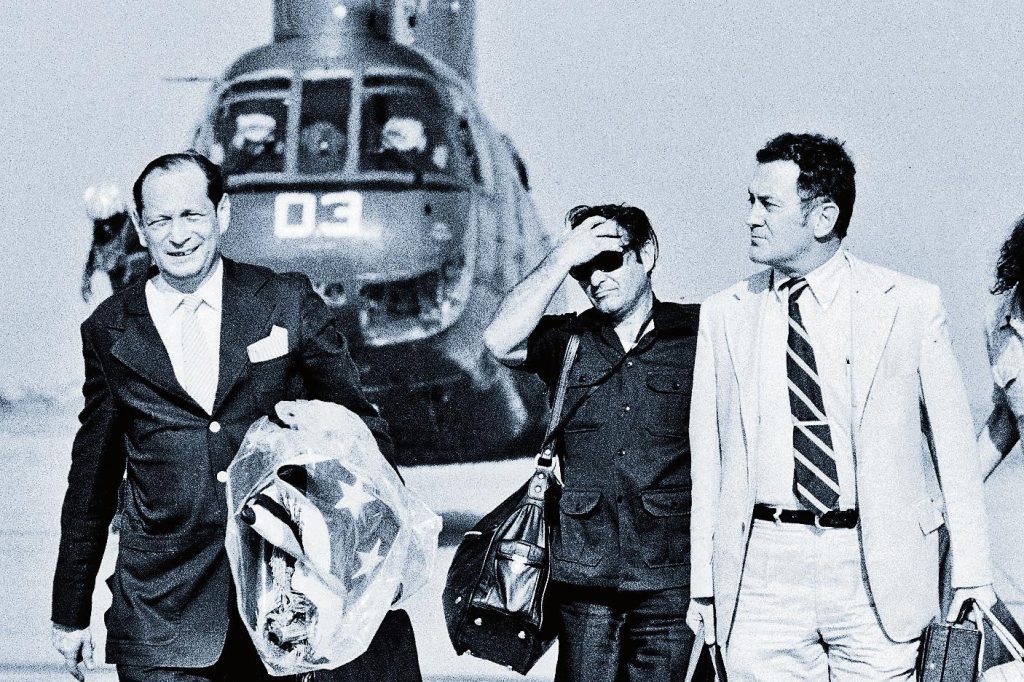
On April 13, 1920, the completed National museum was inaugurated during Khmer New Year in the presence of H.M King Sisowath, François-Marius Baudoin, Résident-supérieur, and M. Groslier, director of Cambodian Arts, and Conservator of the museum.
13 April, 1975, was the Cambodian New Year and the Khmer Rouge continued to bombard Phnom Penh. At 09:00 the Supreme Committee had its first session and unanimously elected Sak Sutsakhan president, becoming both the head of the government and interim Chief of State.
On April 14, 1970, Prime Minister Lon Nol requested military assistance from the US
On 14 April, 1975, the military situation in Cambodia was becoming increasingly precarious. That morning, the Cabinet met at Sak’s office at the General Staff Headquarters. At 10:25 a KAF pilot dropped four 250-pound bombs from his T-28 fighter bomber. Two of the bombs exploded about 20 yards (18 m) from Sak’s office, killing seven officers and NCOs and wounding twenty others. Sak declared a 24-hour curfew and announced that the battle would continue. That afternoon Takhmau, capital of the Kandal Province and 11 kilometres south of Phnom Penh, fell to the Khmer Rouge. The loss of this key point in the FANK defense perimeter had a demoralizing effect. Several counterattacks were initiated but to no avail. Soon a fierce battle was in progress in the southern suburbs. The U.S. aerial resupply into Pochentong was completely halted.
On April 15, 1975, Pochentong and the dike running east/west to the north of Phnom Penh, both of which formed the last ring of defense around the capital, were overrun by Khmer Rouge assaults. The intervention of the Parachute Brigade, brought back from the east of the Mekong, had no effect on the situation to the west of the capital. The brigade tried to move west, but was only able to get 6 kilometres down Route 4. Meanwhile, refugees continued to pour into the city.
Sak decided to make a last peace offer to Prince Sihanouk, transferring the Republic and its armed forces to him, but not surrendering to the Khmer Rouge. Late that night, Sak called a meeting of the Council of Ministers, this time consisting of both the Supreme Committee and the Cabinet, which made decisions including political and military measures, channeling the ever-increasing stream of refugees into schools, pagodas, their feeding, the reshuffling of the cabinet, reinforcing the troops in Phnom Penh by flying in a few battalions from different provinces through the Mean Chey airport and the formation of an Ad Hoc Committee chaired by Long Boret to prepare peace overtures for either Prince Sihanouk or the Khmer Rouge
On April 15, 1970, Sihanouk condemned the persecutions of the Vietnamese in Cambodia and underlined that the Lon Nol government had “a character incomparably savage, barbarous, fascist and Nazi”. He asked other governments to severe all relations with it.
On the same day Lon Nol called to the “mobilisation of the nation…to defend…each parcel of our territory”. Enthusiasm led to a massive enrolment in the FANK to defend the motherland against the “Vietnamese aggressors”. Many died in the early fighting against the experienced and well-equipped Vietcong.
On 15 April 1998, Pol Pot died in his sleep, apparently of heart failure. He was 72. His body was preserved with ice and formaldehyde so that his death could be verified by journalists attending his funeral.
